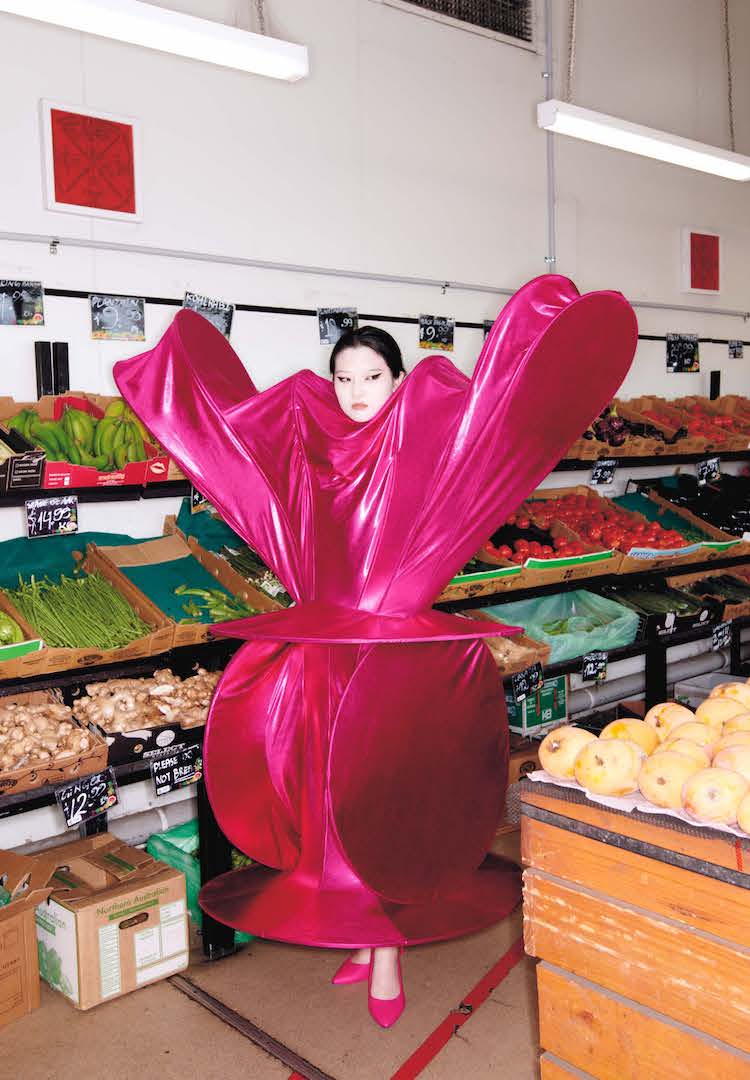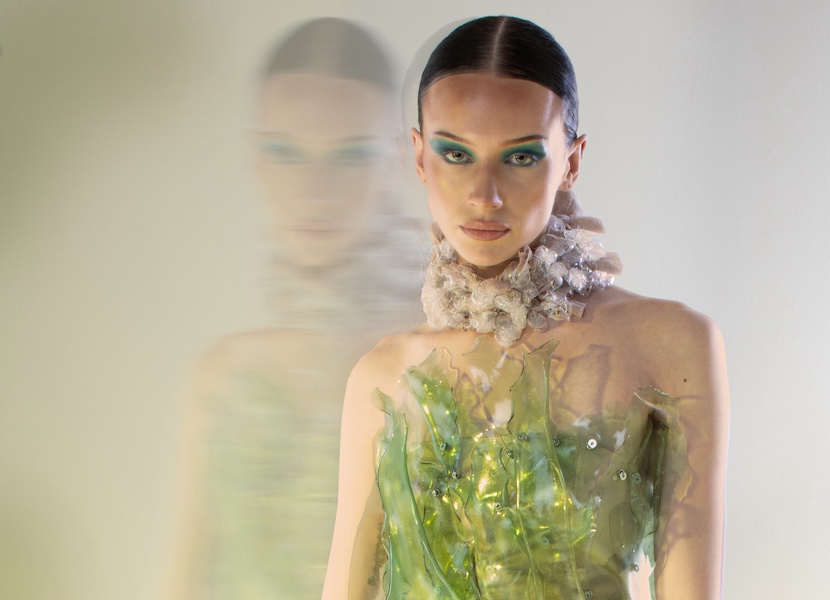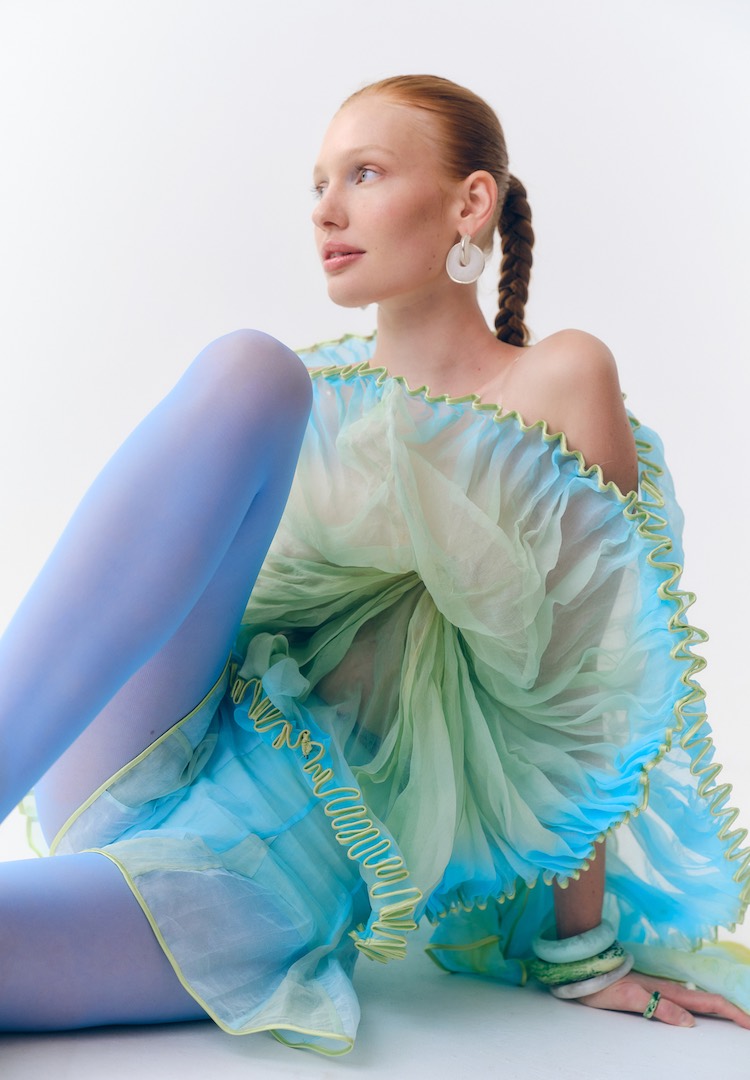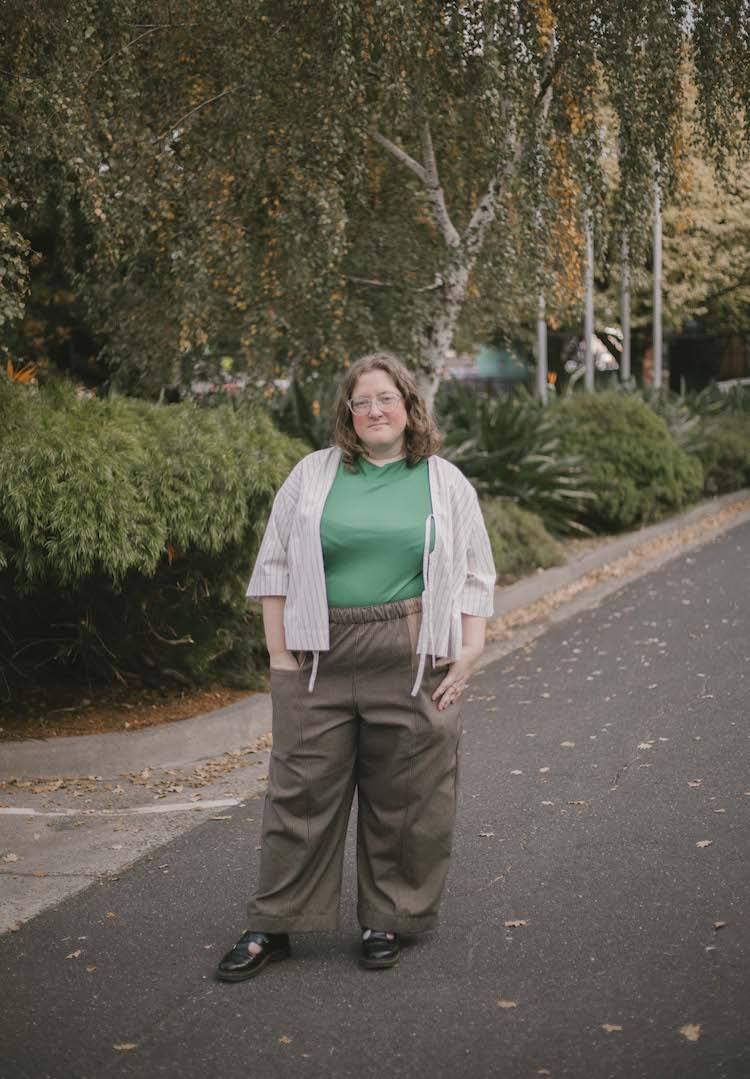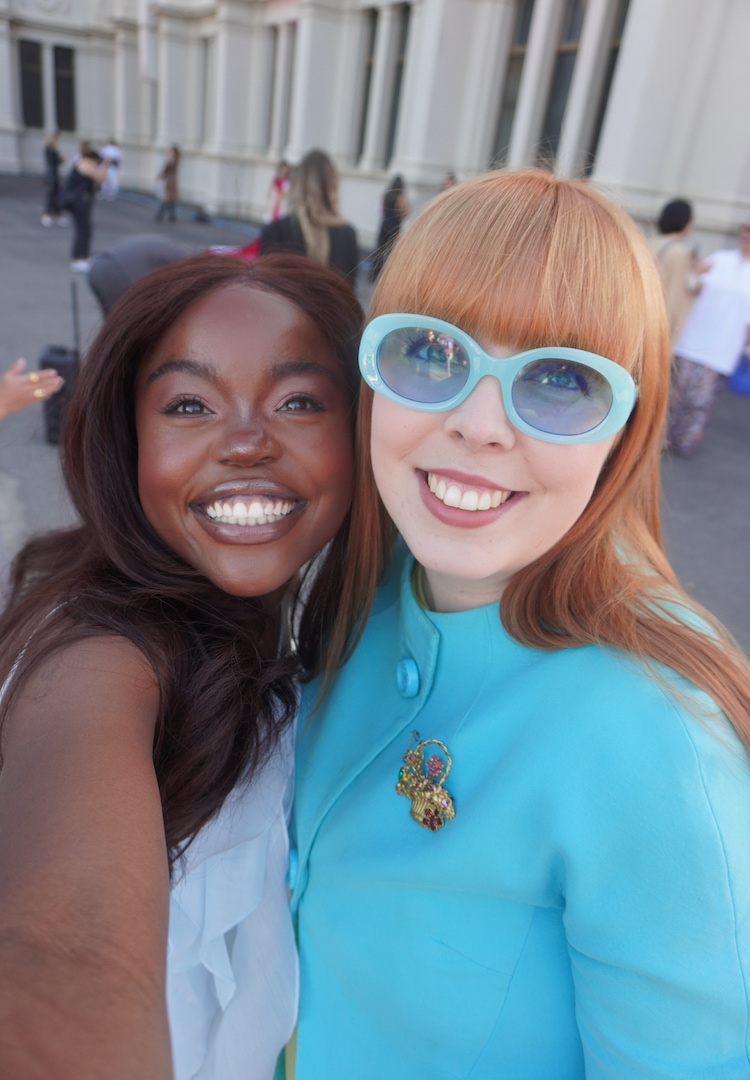Melbourne fashion graduate Amy Cottrell is creating innovative pieces from biodegradable plastic
PHOTOGRAPHY BY Adam Epps
WORDS BY IZZY WIGHT
“I enjoy pushing boundaries by exploring new ways to create textural pieces, with sustainability forming the foundation for my designs.”
With its sculptural silhouettes and thoughtful detailing, it’s hard to believe Amy Cottrell’s award-winning collection is made from biodegradable plastic. A graduate of Whitehouse Institute of Design in Melbourne, Amy spent her final year developing a non-toxic, edible kind of plastic made from harmless household ingredients. Using “innovative technologies and traditional artisanal techniques”, Amy then transformed this plastic into chandelier-style skirts, dreamy outerwear and delicate accessories.
Looking for more fashion news and features? Head to our Fashion section.
Titled Plasticity, Amy’s graduate collection is inspired by her experience growing up in a horticultural family. “Our family business is reliant on a healthy river system,” she says. “… The motivation to find innovative ways to clean up the Australian fashion industry and assist in improving the environmental issues we face is very personal for me.”
As an official media partner of Paypal Melbourne Fashion Festival, Fashion Journal is excited to once again be supporting the National Graduate Showcase, celebrating Australia’s top-ranked emerging fashion design talent. The top 10 leading graduates from across the country will exhibit their collections in a boundary-pushing presentation, showcasing experimental design and innovation. Over the next few weeks, we’ll be profiling each designer through a series of interviews. Next up is Amy Cottrell.
Please introduce yourself to our readers.
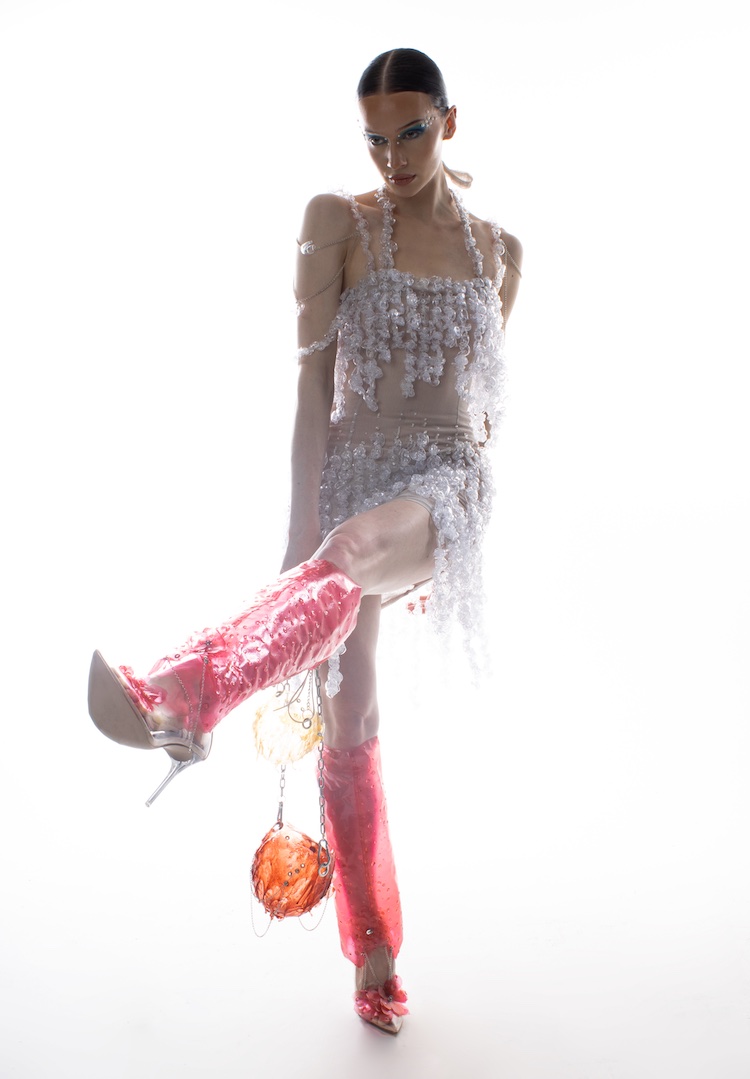
My name is Amy Cottrell. I have recently graduated from the Whitehouse Institute of Design in Melbourne with a Bachelor of Fashion Design. I have a passion for creating unique pieces by merging the use of unusual and recycled materials, innovative technologies and traditional artisanal techniques.
I enjoy pushing boundaries by exploring new ways to create textural pieces, with sustainability forming the foundation for my designs… [I like] creating pieces that people will make an emotional connection with and treasure for many years. I believe that sustainable fashion provides an exciting opportunity to explore new frontiers within the fashion industry.
Tell us about your collection.
My collection, titled Plasticity, explores our relationship with plastic – the man-made substance that was once strongly associated with progress and is now held responsible for major environmental damage. In nature, plasticity describes how organisms have the ability to adapt, changing their form and function, to fit into a harsh and challenging world. This collection reflects on the idea that while manmade development and progress are exciting, they come at a cost and are creating overwhelming challenges, particularly in the form of climate change.
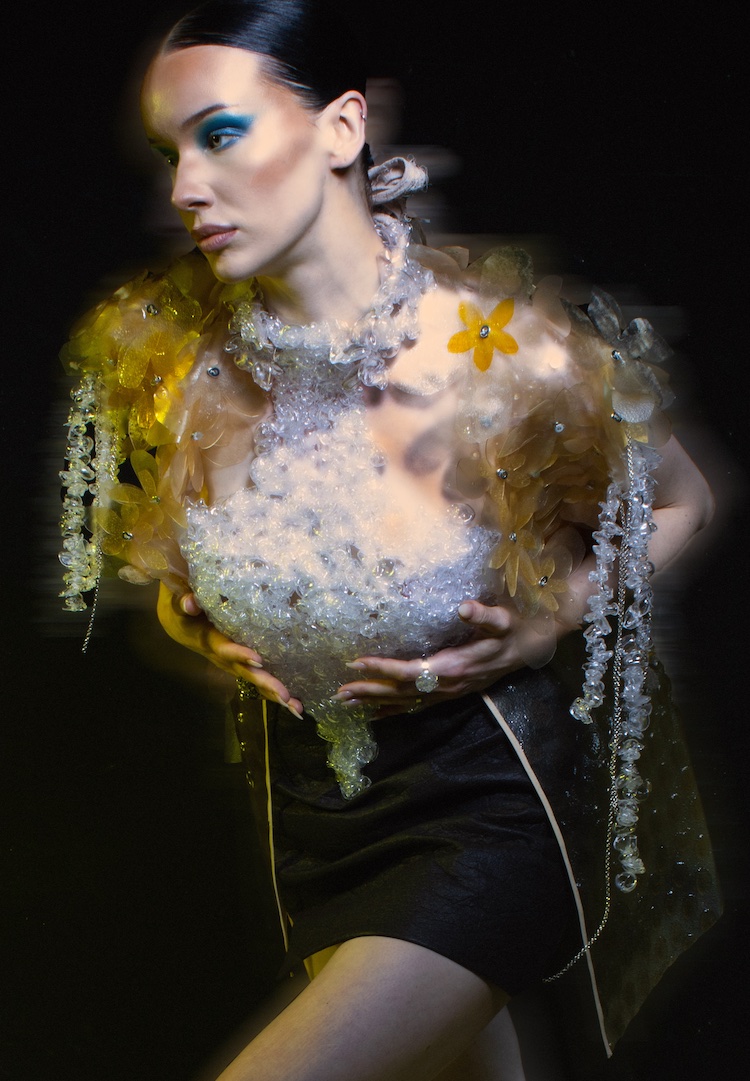
It is essential that we learn to adjust to new conditions to survive and the way we use plastics also needs to adapt and change as we move forwards. I wanted to use the properties of plastic to create sculptural pieces that are feminine and reflect elements of nature, despite being manmade. I have used recycled plastics and bioplastics to achieve this.
When did you know you wanted to get into fashion and textile design?
I have always loved fashion as a personal interest… but was really focused on a professional dance career until a serious injury stopped me from being able to continue down this path. I realised that many of the things that drew me to dance are also very relevant to fashion as both involve extreme creativity, a strong visual aesthetic and discipline.
What were the major points of inspiration for your collection, and you more broadly as a designer?
I have grown up in a horticultural family, growing table grapes and citrus on the Murray River near Mildura. Our family business is reliant on a healthy river system and extreme weather causing droughts and floods really negatively impacts our crops. The motivation to find innovative ways to clean up the Australian fashion industry and assist in improving the environmental issues we face is very personal for me.
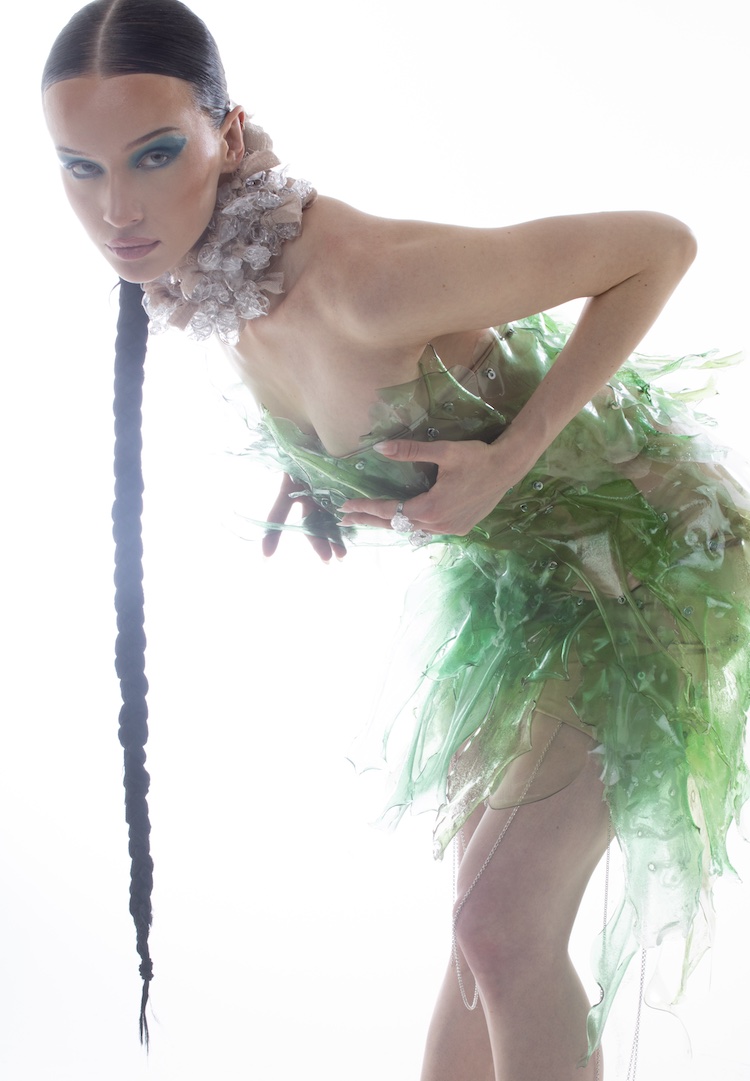
My aesthetic is inspired by the contrasts between structure and rigidity that underlie the formation of beautiful shapes, elegant lines and free-flowing movement, as seen in classical dancers. I also play on the contrasts between manmade structures versus natural elements… [I] used images of insects and bugs with interesting exoskeletons as part of my inspiration.
Tell us about the experience of putting together your graduate collection.
The experience of putting together my graduate collection was an amazing one, filled with lots of highs and lows… [it] provided a massive learning experience for me. Working with highly developmental materials and construction techniques meant that I spent many hours experimenting on things that didn’t really work out… but [it] allowed me to build knowledge. At times I felt like I was taking huge risks as I had no idea if I would actually end up with a collection of garments… [so] seeing the final pieces was really rewarding and exciting for me.
What part does sustainability play in your design practice? And other ethical considerations?
I aim to ensure that sustainability forms the foundation for all my design work. I would like to think that eventually, sustainability will be inherent… rather than something that is advertised as a point of difference. I strongly believe that sustainable practices do not compromise aesthetics or quality.
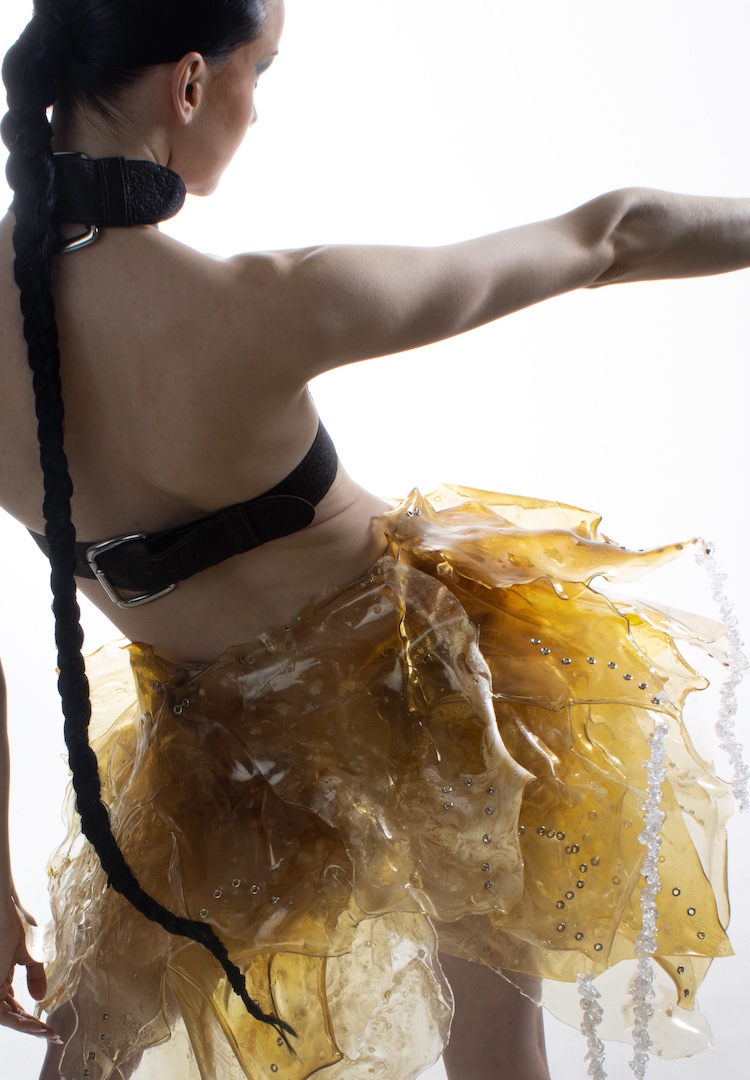
What about the Australian fashion industry needs to change?
A large majority of fashion consumers in Australia embrace overspending on cheap items… this needs to change to reduce waste. As a relatively small and isolated market, Australia has the potential to be a world leader in sustainable practices in fashion. The Australian fashion industry needs to work harder to educate consumers.
Tell us about the process behind creating your own biodegradable/edible plastic. How did you transform it into garment designs?
In creating this collection, I spent a great deal of time researching to find products that could replace plastic and be harmless to the environment. From this, I found several techniques I wanted to explore including recycling plastics, the use of non-toxic glue and silk in a paper mache-type of construction… and the use of silicone to create plastic-like texture.
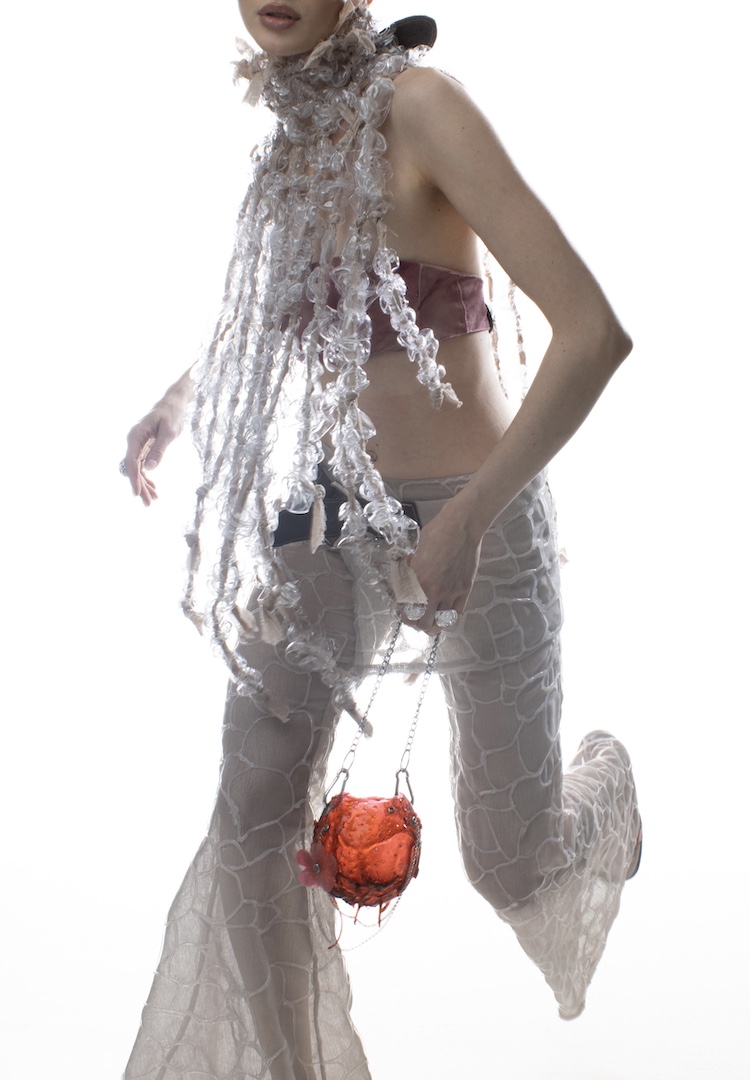
I found some school-based science experiments that included basic recipes for bioplastic. It is completely harmless to the environment, edible, biodegradable and made from harmless household ingredients… I discovered I was able to create flat sheets [of bioplastic] that could be sewn or eyeleted together [and] more thick and rigid sculptural pieces that could be used to make large petals or twisted textural embellishments.
Dream Australian collaborators?
It would be a dream of mine to collaborate with Dion Lee. Dion Lee’s designs have a unique edginess… the work has a futuristic quality to it but retains an elegance that really appeals to me.
Why is it important for designers to consider alternative materials?
I think it is so important for designers to consider alternative materials because it forms the basis for exciting innovation and brings new ideas to the forefront of design. This type of thinking… may help uncover the next new thing in fashion, while [also] making a major contribution to cleaning up the environment.
Some of Amy’s responses have been edited for clarity. To view more of the designer’s work, head here.

